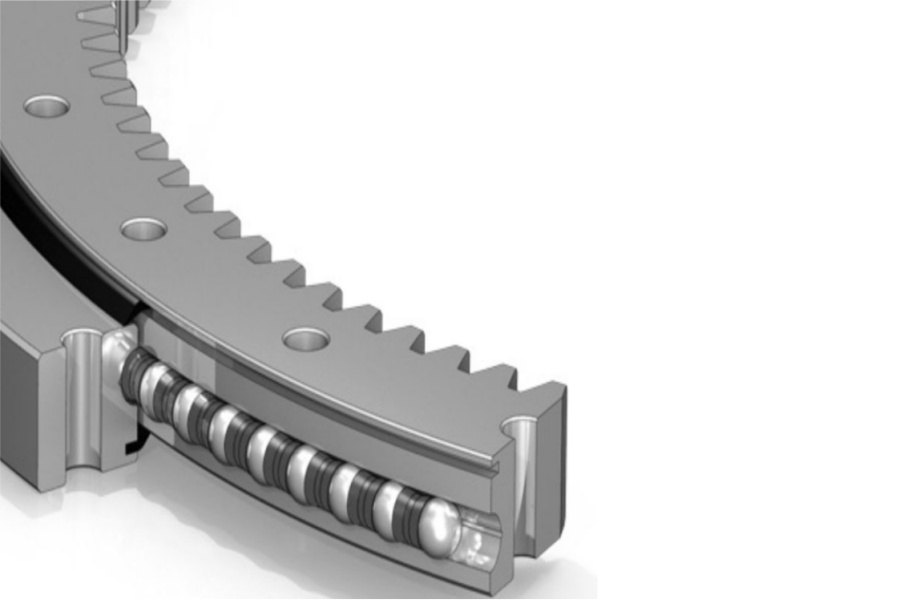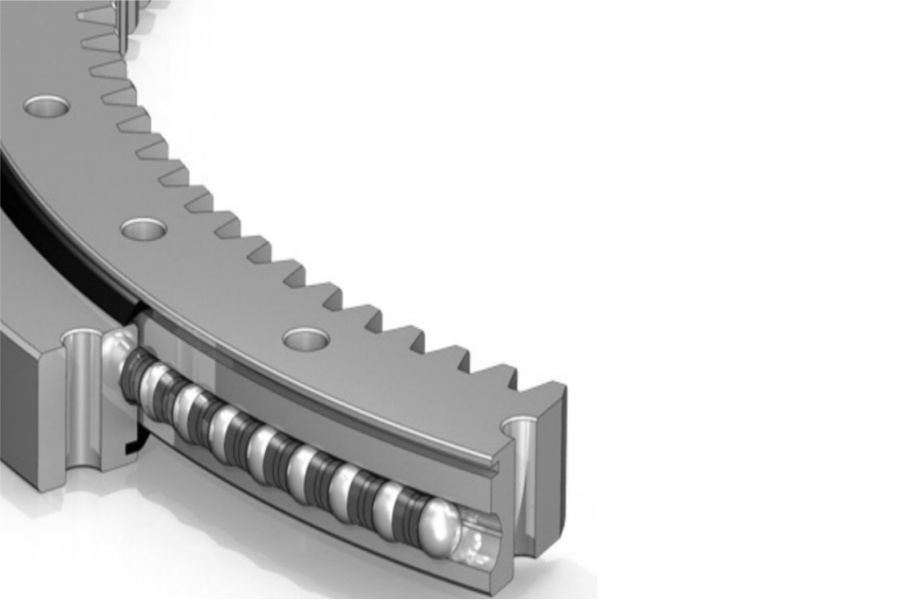
Mastering Raceway Diameter Measurement for Slewing Bearings
What is Slewing Bearing
Slewing Bearing is a critical rotational component engineered to handle combined axial, radial, and moment loads in heavy machinery. Unlike conventional bearings, it features integrated gear teeth and mounting holes, serving as a structural pivot point in applications like cranes, excavators, and wind turbines. Its raceway—a precisely machined groove housing rolling elements (balls or rollers)—demands micron-level accuracy for optimal load distribution and smooth operation.

Rapid Precision Measurement of Raceway Diameters
Conventional methods (calipers with steel balls or wall-thickness) suffer from inaccuracy or complexity. The modified ball-tipped gauge technique enables in-process measurement without disassembly:
Gauge Fabrication
Modify a tubular gauge by replacing its flat tips.
Cut precision-grade steel balls (matching the bearing’s rolling elements) into hemispheres.
Weld one hemisphere to the gauge’s fixed tip using TIG welding.
Mount the opposite hemisphere to a dial indicator’s probe.
Attach the assembly to the gauge’s tubular body.
Measurement Procedure
Calibrate the gauge against gauge blocks set to the target raceway diameter (zero the dial indicator).
Position the fixed ball tip against one raceway edge.
Contact the dial indicator’s ball tip to the opposite edge.
Rotate the gauge along the raceway plane to find the apex (minimum dial reading).
Record the deviation: Values within tolerance confirm machining completion; deviations >0.01mm require remachining.
Accuracy Validation
Raceway measurements predict bearing clearance with <0.01mm error versus post-assembly tests.
Validated for high-precision bearings with micron-level clearance requirements.
Advantages and Limitations
Advantages:
Eliminates trial assemblies, reducing processing time by 40–60%.
Achieves ±0.005mm repeatability for sub-0.05mm clearance bearings.
Adaptable to cross-roller bearings and thin-wall designs.
Limitations:
Requires custom gauge fabrication and skilled operators.
Demands perfect ball hemisphere cutting/welding to prevent measurement drift.
Core Characteristics of Slewing Bearings
Multi-Load Capacity: Simultaneously manages axial, radial, and moment loads (e.g., 5,000 kN axial + 2,500 kN radial).
Integrated Gearing: Gear teeth (induction-hardened to 55–60 HRC) enable direct torque transmission.
Robust Sealing: Multi-labyrinth seals with NBR/FKM lips withstand harsh environments (IP65+).
Material Integrity: Forged 50Mn/42CrMo4 steel through-hardened to 55 HRC.
Precision Raceways: Grinding tolerance: ±0.025mm; surface finish: Ra 0.4μm.
Industrial Applications
Construction: Excavator slewing rings (3-row roller design, 3m+ diameter).
Wind Energy: Yaw/pitch bearings (4-point contact balls, corrosion-resistant coatings).
Material Handling: Port crane bearings (10,000 kN static load capacity).
Medical: LINAC gantry bearings (micron-level rotation accuracy).
Robotics: Welding positioners (cross-roller designs for <0.1° backlash).
Price Determinants
Material & Size: 42CrMo4 alloy bearings cost 25%+ more than 50Mn; 4m-diameter units are 3x cost of 1m units.
Precision: ISO P5 tolerance adds 15–20% vs. standard P6.
Gearing: Ground teeth increase cost 30% over milled teeth.
Sealing: IP67-rated multi-lip seals add 10–15%.
Customization: Non-standard bolt patterns/holes incur 20–50% premiums.
Certifications: DNV-GL/CE certification adds 5–10%.
Supplier of slewing bearing
LYRADRIVE delivers ISO 9001-certified slewing bearings with advanced metrology capabilities for raceway manufacturing. Their in-house gauge calibration lab and proprietary hardening processes (core toughness: 55–60 HRC) ensure micron-accurate raceways for mining, energy, and robotics applications. Global technical support includes measurement protocol optimization and predictive maintenance integration, reducing client downtime by 30%.



